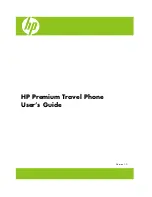
5. If there is no entry after time out, AA will announce (OGM3):
"Please hold, your call is being transferred to the operator." And
automatically ring the operator handset.
6. If the destination handset does not answer (busy, power off, or out
of range) after handset paging time out, the AA prompts the caller
for another extension number by announcing (OGM5): "The
extension you've entered is busy or not available. Please enter
another extension number or press 0 for the operator."
nd
7. If the 2 try is still not successful, AA will announce (OGM4): "Sorry,
nobody can answer your call right now. Please try again later,
goodbye." then drops the call.
Notes:
1. Intercom calls are not routed by Auto-Attendant.
2. Routing messages OGM2, 3, 4, and 5 are not user programmable.
3. The timeout is 5 seconds for entering extension number.
st
nd
4. Call routing is at most 2 hops. That is, if both the 1 and the 2
handsets do not answer, the call will be terminated. Call routed to
the operator is final and will be terminated if the operator does not
answer.
5.
Call Waiting
1. A handset, while talking on one phone line, can be informed of the
arrival of a new incoming phone call.
2. For example, suppose that Handset 15 is talking on Line 1. When
a new call comes in on, say, Line 4, and the caller enters extension
number "15" when prompted by the AA, or if the call is set to be
routed to Handset 15 when AA is disabled.
3. The base station recognizes that Handset 15 is busy. Instead of
announcing to Line 4 that Handset 15 is busy, the base sends an
alert to Handset 15.
The system's integrated Auto-Attendant (AA) feature is designed
for stand-alone operations, if the system is being used behind a
PBX or key system, the EP-436 system's AA feature should not be
used. Most PBX and key systems do not use the same protocols
that are used with the EP-436 system's AA and may result in
system conflicts and errors.
34












































